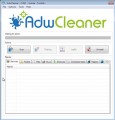The CloudExtender is an ‘ad-supported’ software (also known as adware). The adware is one of the most annoying type of malware floating around the Internet: an attack generates a huge count of intrusive popup advertisements within a user web browser’s screen. A lot of people have fallen victim to these kinds of attacks, looking the Internet in hopes of finding guide on how to remove unwanted advertisements. Now, computer geeks and Myantispyware lab have teamed up to create the step by step guidance which allow users delete CloudExtender adware from your computer for free.
Technically, the CloudExtender software is not a virus, but it does bad things, it generates lots of advertisements. It may download and install on to your PC other harmful and unwanted programs without your permission, force you to visit misleading or malicious web-sites. Moreover, the ad-supported software can install web-browser hijacker. Once installed, it’ll rewrite your web browser setting like startpage, newtab page and search engine by default with an unwanted web page.
The ‘ad supported’ software like CloudExtender often change all browser shortcuts that located on your Desktop to force you visit various unwanted ad sites. As a result, your browser can still redirect you to an undesired ad web-page despite your PC system is actually clean of ad-supported software and other malicious software.
We recommend to remove the CloudExtender ad-supported software which developed to reroute your web-browser to various ad sites, as soon as you found this problem, as it can direct you to web-resources which may load other malicious software on your machine.
Remove CloudExtender
There present several free ad-supported software removal utilities. Also it is possible to delete CloudExtender manually. But we recommend to combine all these methods below into the one removal algorithm. Follow the steps of the instructions. Read this manual carefully, bookmark or print it, because you may need to close your web browser or reboot your machine.
How to manually remove CloudExtender
The useful removal guide for the CloudExtender ad-supported software. The detailed procedure can be followed by anyone as it really does take you step-by-step. If you follow this process to remove CloudExtender adware let us know how you managed by sending us your comments please.
Uninstalling the CloudExtender, check the list of installed software first
Some of potentially unwanted applications, adware and browser hijackers can be removed using the Add/Remove programs tool which can be found in the Microsoft Windows Control Panel. So, if you’re using any version of MS Windows and you have noticed an unwanted application, then first try to remove it through Add/Remove programs.
Windows 8, 8.1, 10
First, click the Windows button
Windows XP, Vista, 7
First, click “Start” and select “Control Panel”.
It will show the Windows Control Panel as on the image below.
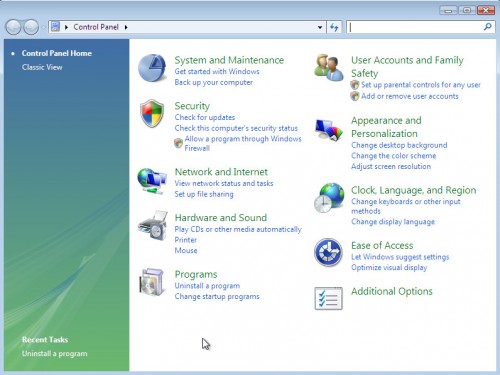
Next, click “Uninstall a program” ![]()
It will open a list of all applications installed on your computer. Scroll through the all list, and uninstall any suspicious and unknown software. To quickly find the latest installed applications, we recommend sort applications by date in the Control panel.
Fix web-browser shortcuts, changed by adware
Now you need to clean up the web-browser shortcuts. Check that the shortcut referring to the right exe-file of the internet browser, and not on any unknown file.
Right click on the shortcut of infected browser as shown on the image below.
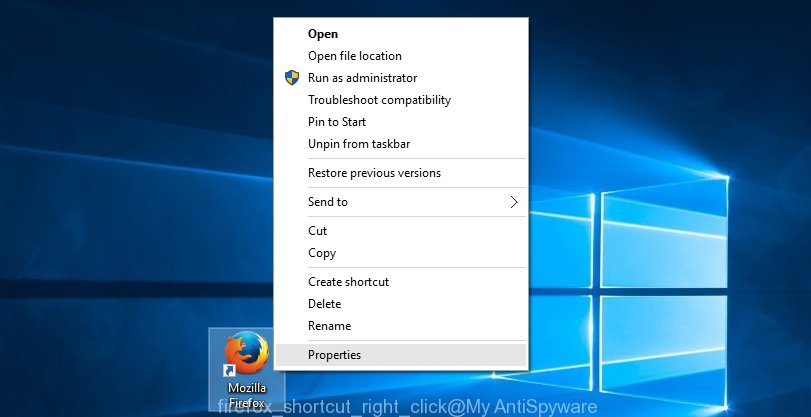
Select the “Properties” option and it’ll show a shortcut’s properties. Next, click the “Shortcut” tab and then delete the “http://site.address” string from Target field as shown on the screen below.
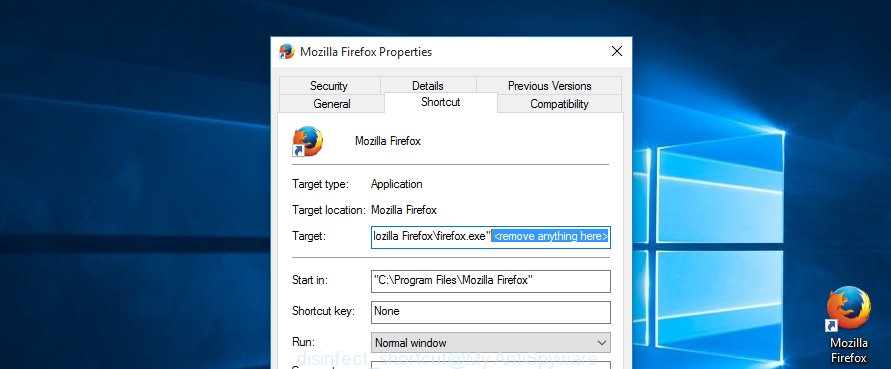
Then press OK to save changes. Repeat the step for all browsers that are redirected to an intrusive page.
Remove unwanted Scheduled Tasks
Once installed, the ‘ad supported’ software such as CloudExtender can add a task in to the Windows Task Scheduler Library. Due to this, every time when you open your PC, it will display an undesired web page. So, you need to check the Task Scheduler Library and delete all harmful tasks that have been created by ‘ad-supported’ program.
Press Windows and R keys on your keyboard at the same time. It will open a dialog box that called Run. In the text field, type “taskschd.msc” (without the quotes) and click OK. Task Scheduler window opens. In the left-hand side, click “Task Scheduler Library”, as shown on the screen below.
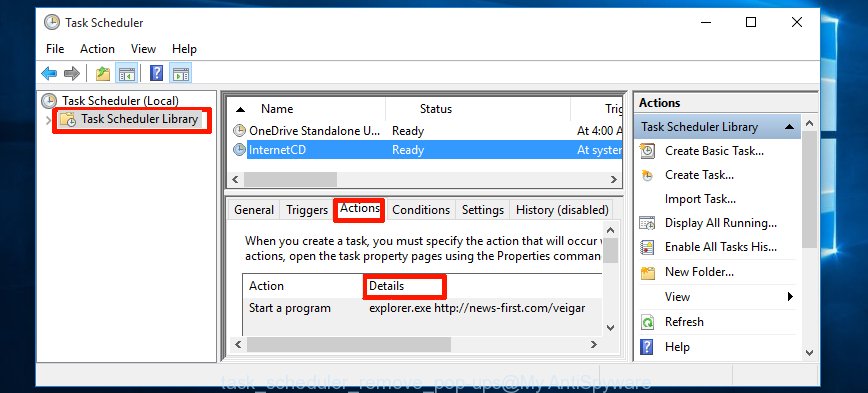
Task scheduler, list of tasks
In the middle part you will see a list of installed tasks. Select the first task, its properties will be show just below automatically. Next, press the Actions tab. Necessary to look at the text which is written under Details. Found something like “explorer.exe http://site.address” or “chrome.exe http://site.address” or “firefox.exe http://site.address”, then you need get rid of this task. If you are not sure that executes the task, then google it. If it is a component of the ‘ad-supported’ application, then this task also should be removed.
Further press on it with the right mouse button and select Delete as on the image below.

Task scheduler, delete a task
Repeat this step, if you have found a few tasks that have been created by ‘ad-supported’ software. Once is finished, close the Task Scheduler window.
CloudExtender adware automatic removal
The ‘ad supported’ software can hide its components which are difficult for you to find out and delete completely. This can lead to the fact that after some time, the ad supported software once again infect your computer and redirect your browser to unwanted web-sites. Moreover, We want to note that it’s not always safe to delete adware manually, if you don’t have much experience in setting up and configuring the Microsoft Windows operating system. The best method to detect and remove adware is to run free malware removal programs.
How to remove CloudExtender adware with Zemana Anti-malware
You can get rid of CloudExtender adware automatically with a help of Zemana Anti-malware. We suggest this malware removal utility because it can easily remove browser hijackers, PUPs, adware with all their components such as folders, files and registry entries.
Download Zemana Anti Malware on your PC by clicking on the link below. Save it on your desktop.
165037 downloads
Author: Zemana Ltd
Category: Security tools
Update: July 16, 2019
When the download is done, close all windows on your computer. Further, start the install file called Zemana.AntiMalware.Setup. If the “User Account Control” dialog box pops up as on the image below, click the “Yes” button.
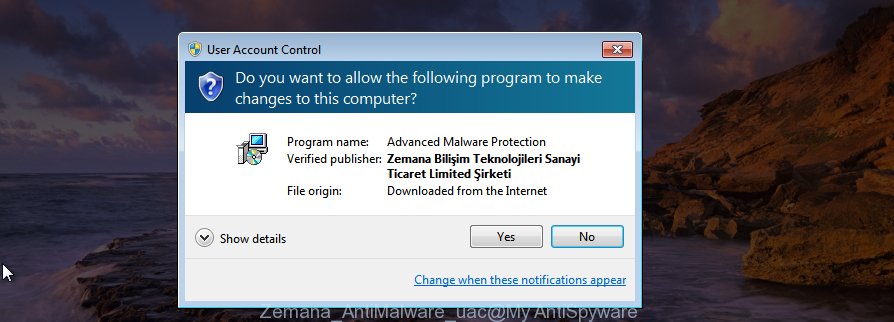
It will show the “Setup wizard” that will help you install Zemana Anti-Malware on the computer. Follow the prompts and do not make any changes to default settings.
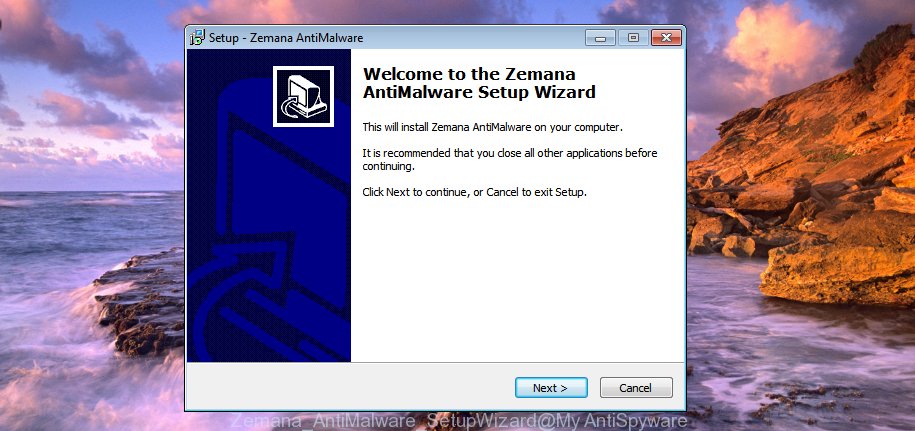
Once installation is finished successfully, Zemana AntiMalware will automatically start and you can see its main window as shown below.
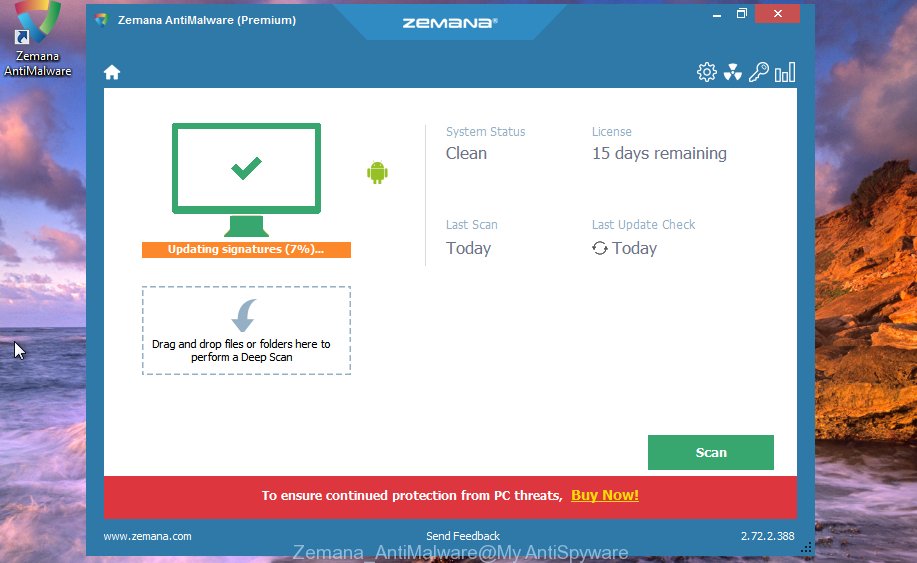
Next, click the “Scan” button to start scanning your system for the CloudExtender ad-supported software that redirects your web browser to annoying ad web-pages. A system scan can take anywhere from 5 to 30 minutes, depending on your PC system.

Once the system scan is finished, it’ll display a list of all threats found by this tool. Next, you need to click “Next” button.
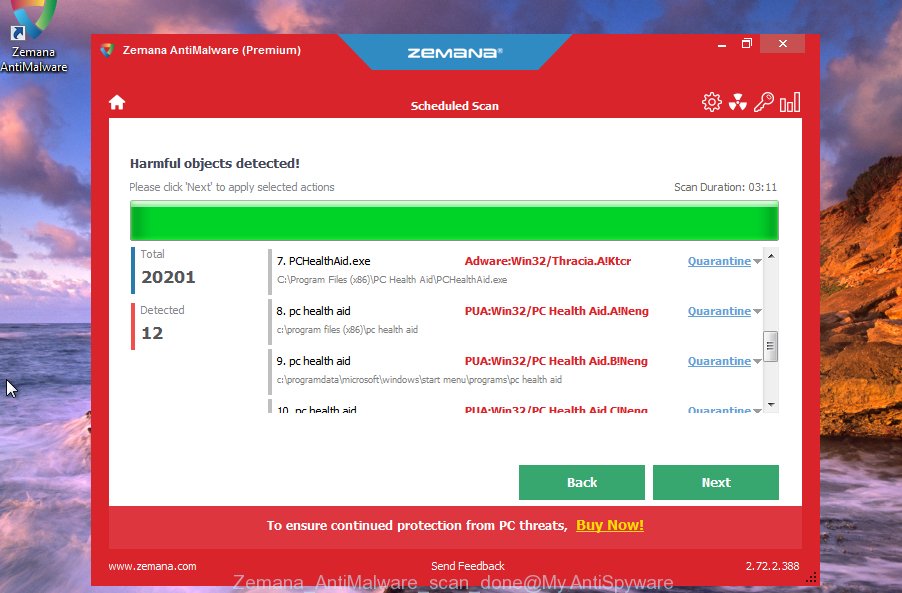
The Zemana Anti-Malware will remove CloudExtender adware that causes internet browsers to show annoying advertisements and add threats to the Quarantine. Once finished, you may be prompted to restart your machine.
Use Malwarebytes to remove CloudExtender adware
We recommend using the Malwarebytes Free that are completely clean your PC of the adware. The free tool is an advanced malicious software removal application developed by (c) Malwarebytes lab. This program uses the world’s most popular anti-malware technology. It is able to help you remove undesired CloudExtender ad-supported software from your web-browsers, potentially unwanted software, malicious software, hijacker infections, toolbars, ransomware and other security threats from your computer for free.
Download Malwarebytes on your PC system by clicking on the link below. Save it on your Windows desktop or in any other place.
327265 downloads
Author: Malwarebytes
Category: Security tools
Update: April 15, 2020
After the download is complete, close all applications and windows on your computer. Double-click the install file named mb3-setup. If the “User Account Control” dialog box pops up like below, click the “Yes” button.

It will open the “Setup wizard” that will help you install Malwarebytes on your personal computer. Follow the prompts and do not make any changes to default settings.

Once installation is finished successfully, click Finish button. Malwarebytes will automatically start and you can see its main screen as shown on the screen below.
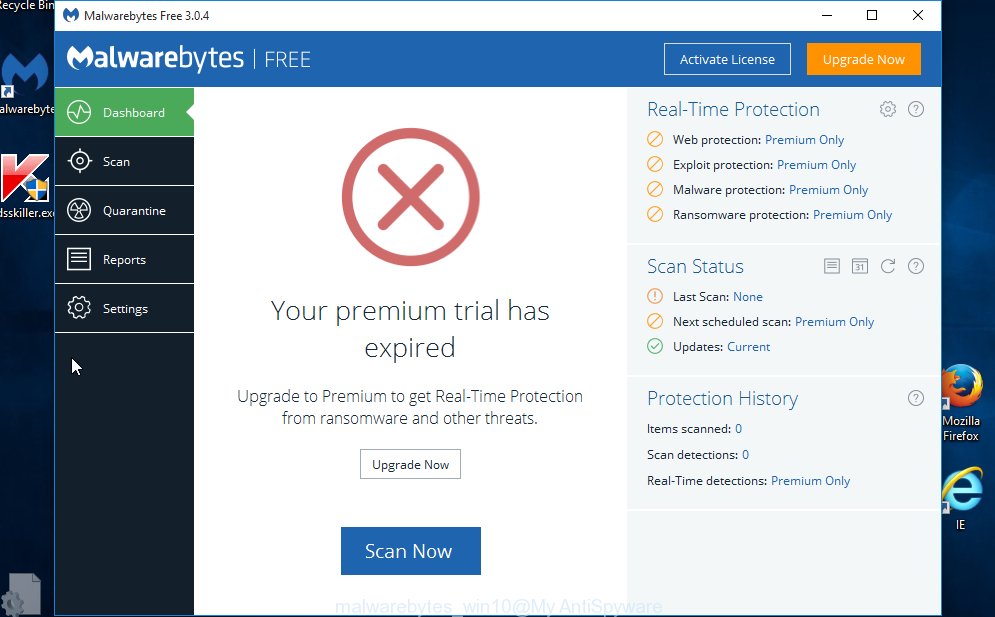
Now click the “Scan Now” button to perform a system scan with this tool for the CloudExtender that causes lots of annoying pop ups. Depending on your personal computer, the scan can take anywhere from a few minutes to close to an hour. While the tool is checking, you may see count of objects and files has already scanned.
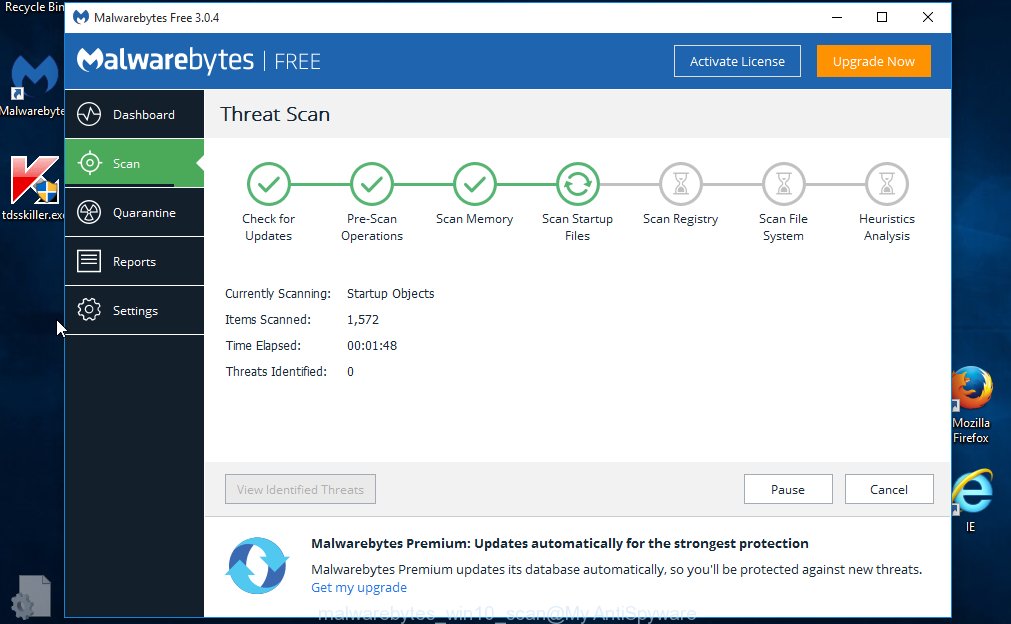
Once the scanning is finished, you’ll be displayed the list of all detected items on your personal computer. In order to delete all items, simply click “Quarantine Selected” button. The Malwarebytes will get rid of CloudExtender adware that causes web browsers to display unwanted ads and add items to the Quarantine. Once that process is complete, you may be prompted to reboot the computer.
We suggest you look at the following video, which completely explains the process of using the Malwarebytes to get rid of ad-supported software, hijacker and other malware.
Scan your system and remove CloudExtender with AdwCleaner
The AdwCleaner tool is free and easy to use. It may check and delete malware, PUPs and adware in Firefox, Google Chrome, Internet Explorer and MS Edge web-browsers and thereby delete all intrusive CloudExtender pop-up ads. AdwCleaner is powerful enough to find and remove harmful registry entries and files that are hidden on the machine.

- Download AdwCleaner from the link below.
AdwCleaner download
225631 downloads
Version: 8.4.1
Author: Xplode, MalwareBytes
Category: Security tools
Update: October 5, 2024
- When the download is finished, double press the AdwCleaner icon. Once this utility is opened, press “Scan” button . This will begin scanning the whole machine to find out CloudExtender ‘ad supported’ software which cause undesired pop-up advertisements to appear. Depending on your machine, the scan can take anywhere from a few minutes to close to an hour.
- When that process is done, it will display you the results. When you’re ready, click “Clean” button. It will show a prompt, press “OK”.
These few simple steps are shown in detail in the following video guide.
Run AdBlocker to stay safe online
Run an adblocker tool such as AdGuard will protect you from harmful advertisements and content. Moreover, you may find that the AdGuard have an option to protect your privacy and block phishing and spam web sites. Additionally, ad-blocker applications will help you to avoid annoying popup advertisements and unverified links that also a good way to stay safe online.
Installing the AdGuard ad blocker application is simple. First you’ll need to download AdGuard from the following link.
26898 downloads
Version: 6.4
Author: © Adguard
Category: Security tools
Update: November 15, 2018
After the downloading process is done, double-click the downloaded file to start it. The “Setup Wizard” window will show up on the computer screen as shown below.
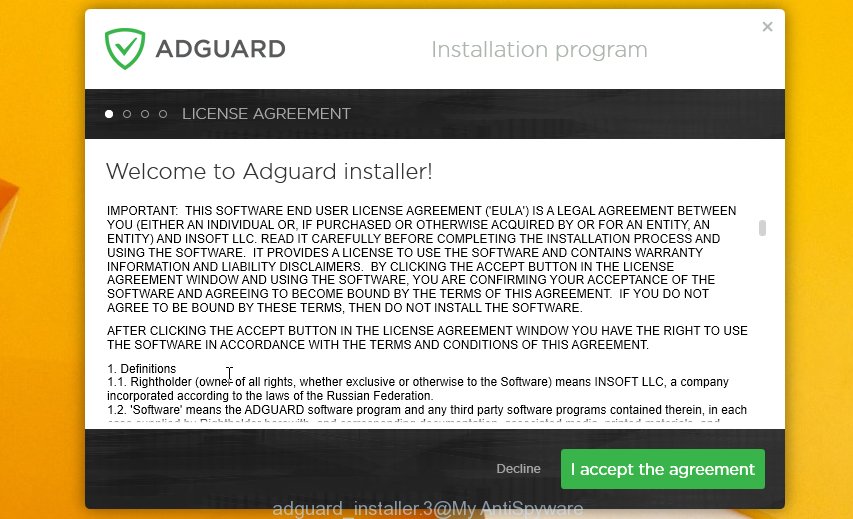
Follow the prompts. AdGuard will then be installed and an icon will be placed on your desktop. A window will show up asking you to confirm that you want to see a quick guide as shown on the screen below.

Click “Skip” button to close the window and use the default settings, or click “Get Started” to see an quick guidance that will allow you get to know AdGuard better.
Each time, when you start your computer, AdGuard will start automatically and block popup advertisements, as well as other malicious or misleading pages. For an overview of all the features of the application, or to change its settings you can simply double-click on the AdGuard icon, that can be found on your desktop.
Prevent CloudExtender adware from installing
The adware is usually come bundled with free programs and install themselves, with or without your knowledge, on your computer. This happens especially when you are installing a free applications. The program installer tricks you into accepting the installation of additional programs, which you do not really want. Moreover, certain paid programs can also install third-party programs that you don’t want! Therefore, always download free programs and paid applications from reputable download web pages. Use ONLY custom or manual setup mode and never blindly click Next button.
Final words
Now your PC system should be free of the CloudExtender that created to redirect your browser to various ad pages. Uninstall AdwCleaner. We suggest that you keep AdGuard (to help you block unwanted pop-up advertisements and undesired harmful web pages) and Zemana Anti-malware (to periodically scan your machine for new browser hijackers, malicious software and ad supported software). Probably you are running an older version of Java or Adobe Flash Player. This can be a security risk, so download and install the latest version right now.
If you are still having problems while trying to get rid of CloudExtender adware from the Chrome, Firefox, IE and Microsoft Edge, then ask for help in our Spyware/Malware removal forum.

